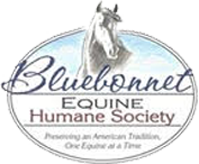By Christa Bass and Jennifer Williams, Ph.D.
Re-feeding is the process of feeding a starved or emaciated horse so that he or she gains weight. These guidelines are meant to be just that, guidelines. Feeding a previously starved equine is a challenge and not every re-feeding method works for every horse.
The most important thing to keep in mind when re-feeding are:
- Start out slow and gradually increase the amount of feed. Don’t be tempted to “dump” feed to the horse in hope he’ll gain weight more quickly. This can cause your horse to founder or colic. Or even worse, it can cause organ failure resulting in death.
- Make any feed changes, including adding supplements, gradually. Don’t add a bunch of new supplements at once.
- Be patient. Re-feeding can be a slow process.
- If your project horse goes off his feed, develops diarrhea, acts colicky or becomes lame, call your veterinarian.
To begin, make sure your new project equine has been thoroughly examined by a veterinarian. If you are fostering for the rescue, check with the Foster Home Coordinator before doing this as he may have been examined in a previous foster home. Sometimes horses who suffer from starvation for too long develop organ failure and may need immediate intervention from a veterinarian.
Make sure the horse has access to fresh, clean water and a salt or mineral block.
Hay is the most important part of any horse’s diet. The physical and nutritional aspects of forages are essential to good gut healthy. When you begin a re-feeding program, you have two options for hay:
- Several small meals per day of a high-calorie hay like alfalfa, eventually working up to free-choice high-quality hay.
- Free-choice grass hay.
After a few days of feeding hay only, you can add grain/pellets/concentrates in small amounts – approximately a half of a pound, 3-4 times per day. For severely emaciated horses, you may opt to feed even smaller meals 5-6 time per day. There are several options for feeds; many people like to use a senior feed or other complete feed because they have all that the horse needs incorporated into them. Many senior feeds are also formulated to be softer and easier to digest, which a starved horse may find easier to deal with. You can increase the amount of feed by approximately ½ lb per meal every 3-4 days.
Not everyone has the ability to feed 4-6 times per day. You can also start your horse with ½ pound of feed two to three times per day, but weight gain may take longer.
Additional things to try if extra feed is not an option might include beet pulp or rice bran. Beet pulp is the dried remains of the stems and leaves of the sugar beet. It can be purchased in pelleted or shredded form. It is high in carbohydrates but also high in fiber, which makes it an excellent additive to the diet to add carbs but not create an overly “hot” horse. Beet pulp should be soaked in an equal amount of water (one scoop of BP to one scoop of water) for 5-15 minutes before feeding. It will also ferment if left too long, so soaking should be done immediately prior to feeding, and leftover thrown away where the horse can’t get it. Rice bran oil or rice bran pellets can also be added to the feed.
If neither beet pulp nor rice bran are available in your area, you can also try corn oil. In order to see weight gain, you must feed anywhere from 1-3 cups of corn oil/day. However start with ¼ cup of corn oil per feeding and gradually increase to 2-3 cups/day. Some horses do not like corn oil and will not eat it. Corn oil also goes rancid if left out in the barn too long, so keep an eye on your corn oil.
Another option is Weight Builder™ from Farnam™ or a similar commercial product.
In most cases, a good diet of hay and a complete feed is enough to get a horse back to a normal weight. Joint supplements for arthritic horses, or vitamins for growing babies or pregnant mares may be a good addition. Other supplements are generally unnecessary and only waste your money.
The biggest things to remember are to be patient and SLOOOOWLY increase the grain. Take at least 3-4 days to allow the horse to become accustomed to each new step up the feed ladder before you change their ration again.
